Dynamic content features are key to making your emails more engaging
Email marketing over the years has evolved in leaps and bounds. In fact, what seemed impossible in the previous decade can now be easily achieved with help of HTML-based emails. Rich design layouts including visual delights like photos, videos to GIF’s are all epitomes of a HTML-rich email. This drastically improves customer experience, boosts customer engagements and in turn increases sale possibilities.
Studies have revealed that personalized emails improve click-through rates by 14% and conversion rates by 10%. Dynamic content can allow you add personalisation into your emails. If you have not already implemented it, this should be something you are working towards.
In the below Email example from EEC, you can see the subscribers in U.S receive greetings for their Independence Day and non-U.S subscribers are greeted with a Rocking Summer, all thanks to Dynamic Content.
How Dynamic Content in Email Works
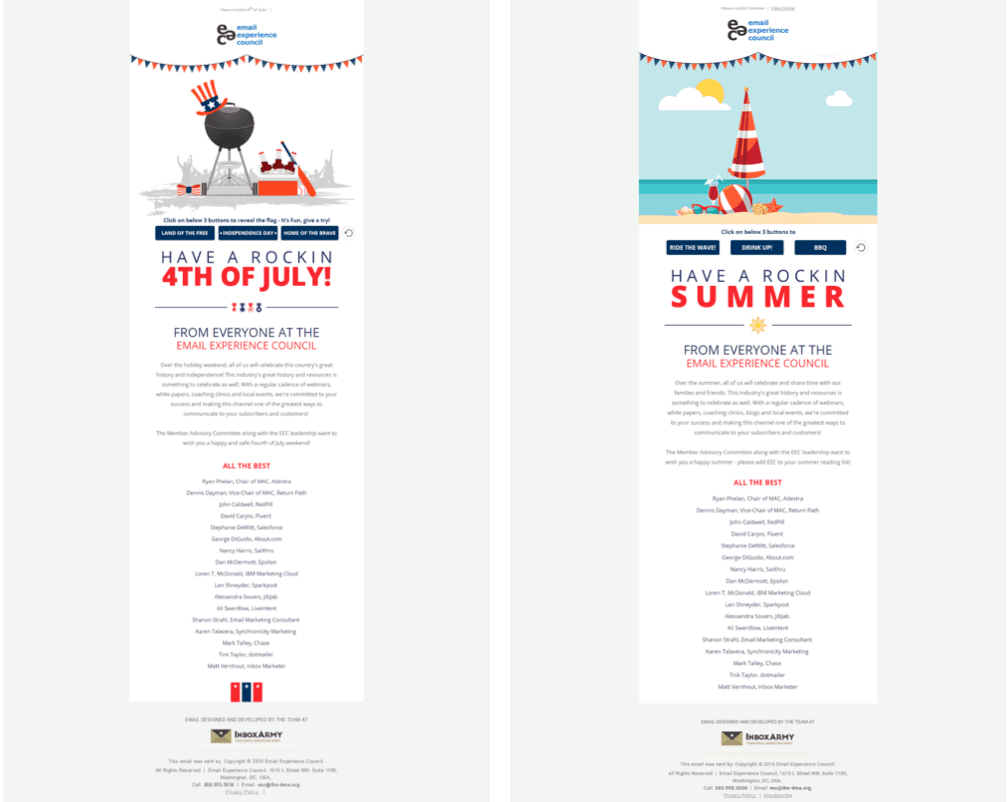
Every email body contains a dynamic box (term changes with different ESPs) which fetches separate content as per the segmentation, which is configured according to certain variables. The variables are defined based on the customer persona generated by collecting information from your subscribers.
A persona can be based on a number of different types of data, such as (but not restricted to):
- Demographic: Name, Age, Sex, Birth Date, Contact Details, Anniversary, Geographical Location
- Firmographics: Organization Name, Work Address, Designation, Industry
- Behavioral: Purchase Pattern, Time spent on Website, Feedback
- Psychographic: Lifestyle, Interest, Hobbies, Likes and Dislikes
Ways to implement Dynamic content to create live feeds
Dynamic Content in emails isn’t a new implementation, but it is yet to be taken up by the majority of email marketing departments. This means there are still big advantages to those which do manage to implement it. With proper dynamic lists and relevant content, marketers can engage their subscribers far more effectively than would be possible with generic content.
1. E-Commerce
Based on the previous purchase history, a customer gets recommendations of related products directly in their emails. The conversion rate of visitors who clicked on product recommendations was found to be 5.5 times higher than the conversion rate of non-clicking customers. Amazon generates 35% of its revenue from their recommendation engine.
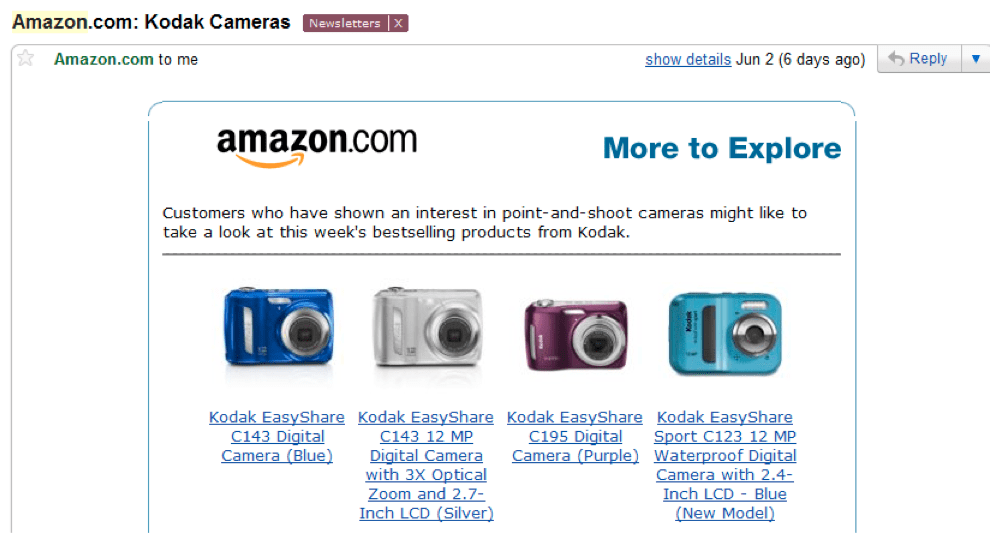
2. Gamification in emails
Creating games for your audience comes with perks for you:
- Establish yourself as a fun company to do business with
- Learn more about your audience
- Keep people more engaged with your brand
- Encourage more product purchases
Cosmetic Retailer Gwynnie Bee included a scratch and win offer in one of the emails which helped customer engagement.
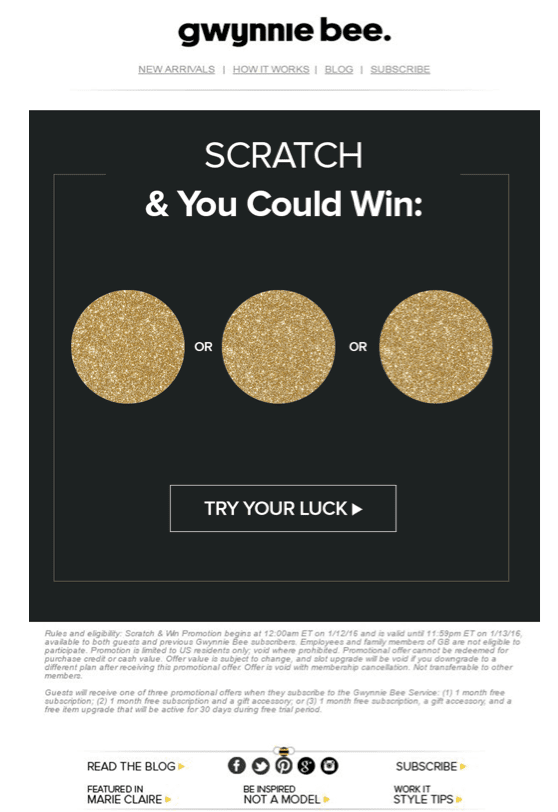 3. Social Media
3. Social Media
Litmus integrated live Twitter feed into their email during The Email Design Conference (TEDC) 2015. After weeks of preparation, the email was an instant hit. People would eagerly tweet and refresh their emails. Even for the non-webkit clients, they could see the appropriate fallback image of the tweet – and that was live as well!
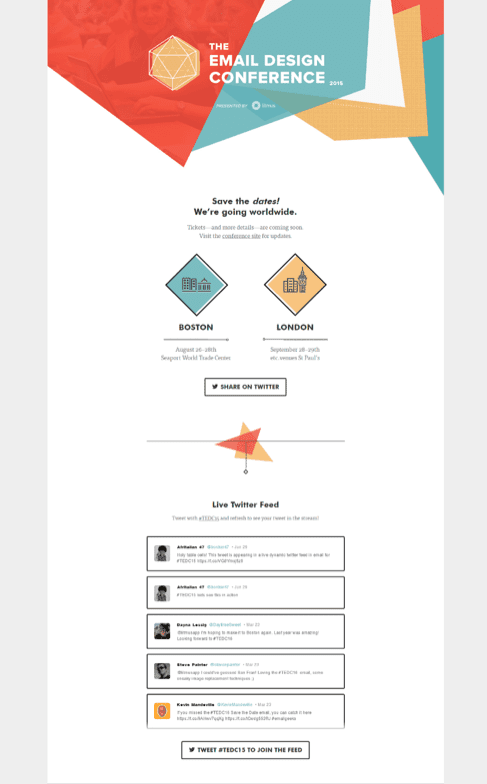
More recently, for TEDC 2016 Litmus encouraged its users to guess the third city where the event was to be hosted along with their hashtag #TEDC16. On reaching 500 shares they revealed it to be San Francisco and (also taking a leaf from last year) displayed their twitter live feed.

Similarly using services such as Statigram and Webstagram, you can stream live images from your Instagram page into your subscriber’s email. Here Statigram helps convert your updates into RSS feed item, which is then sent to your subscribers (read more on this in the following point).
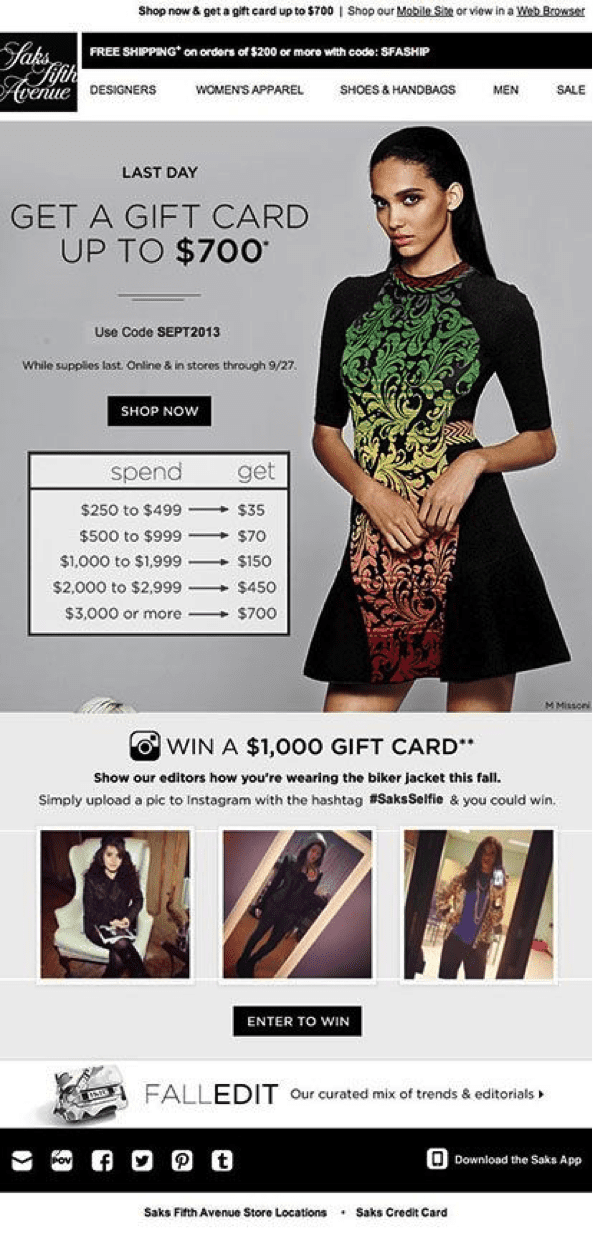
Clothing Retail SAKS implemented it in their promotions, with subscribers uploading their selfies with SAKS clothing, promoting #SaksSelfie hashtag.
4. RSS feed
Many ESPs have the option to link your blog to an RSS feed campaign. This way whenever you update the content, an email is automatically sent to your subscribers with a short description. The essence of RSS feed is that you can specify the number of feed elements to display and the frequency of email being sent, to avoid information overload.
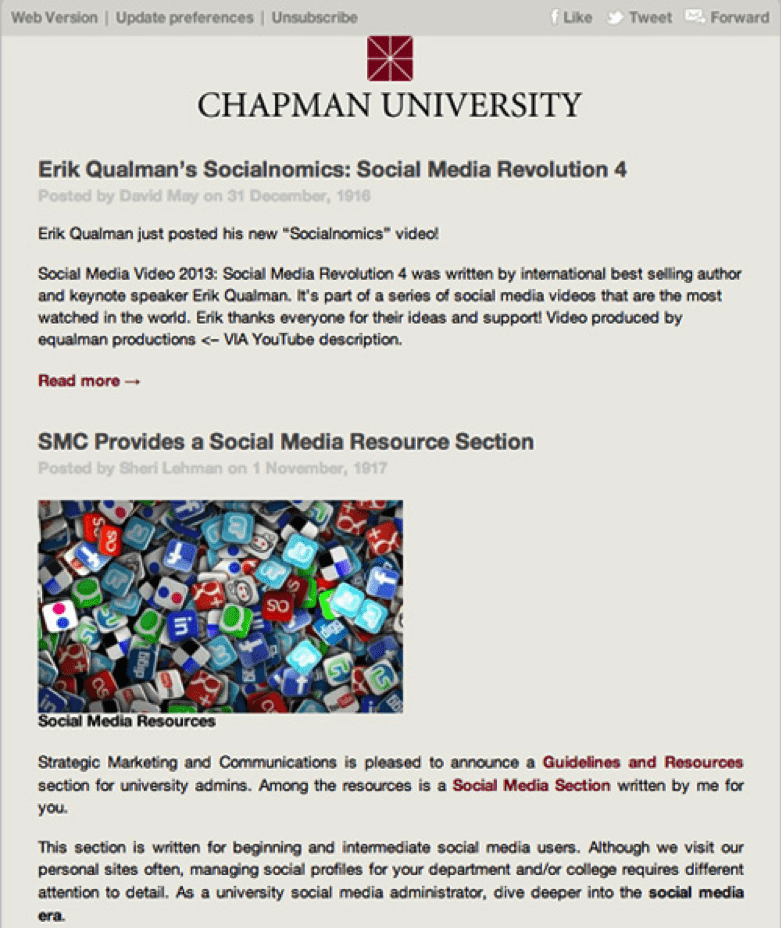
Fig: An example of RSS feed in emails from Chapman University (Source)
The true Potential of the RSS is vast. Everything from News, Fashion, Retail, etc. can be directly displayed dynamically and, depending on the subscriber’s preference, specific content can be sent.
5. Travel Industry
The implementation of a dynamic live feed is prevalent in travel industry emails. With geolocation segmentation, your subscribers can receive emails on travel opportunities in nearby locations. Based on their previous travel destinations or experiences, new explorations can be suggested.
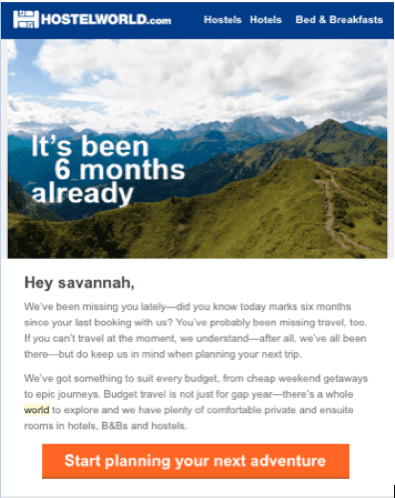
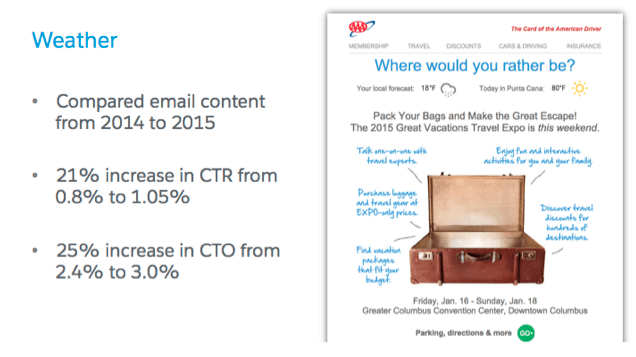
In the above email to promote Travel Expo, AAA Ohio compared the weather in Columbus to another place (in this case Punta Cana, Dominican Republic). This had a 21% increase in the CTR and 25% increase in CTO.
As per “The People Behind the Screens: A Marketer’s Guide to Mobile Audiences” by Live Intent, News Hounds, Entertainment Fans, Travelers and Health buffs have the highest mobile email conversion rates in the morning so making use of the geolocation aspect to serve out the current weather status to your subscribers can be really helpful.
6. Stocks Market Ticker
With 53% of consumers using a smartphone to check their email, you can have your subscribers make use of a live stock market ticker right in their emails. Although there are several alternatives, one of the proven ways is to make use of a widget Embed Code (comprising of the list of the companies) and implementing it in your email HTML code.
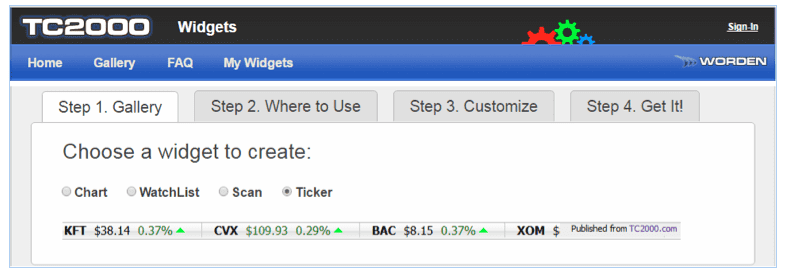
7. Entertainment Industry
Online streaming services such Spotify and Netflix take their game to the next level by sending customized suggestions based on last week’s usage patterns of their subscribers.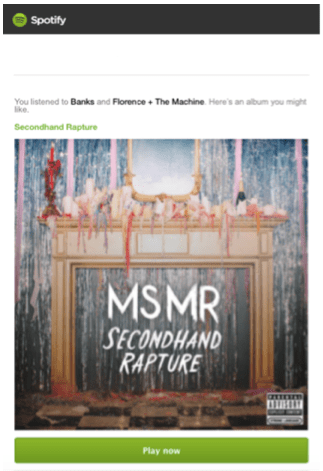
You can learn from this and send recommendations based on:
- Location: Specific shows that are most watched in the subscriber’s location.
- Contacts - sharing the services of the same providers.
Limitations
Even though most ESPs support inserting dynamic block in their email body, the issue mainly arises in the email clients’ side, as not all email clients support dynamic files in email.
Even for live Twitter feeds, dynamic content is only supported in the webkit-supporting email clients. Whereas non-supporting clients can see the fallback of the tweet (in the form of an image) that refreshes in real time.
Most email clients don’t support ASP.NET scripts and hence embed code for stock market ticker is a major gamble depending on your subscribers’ devices.
The Verdict is Out!
Personalization is the name of the game. Subscribers love reading a mail from someone who knows them well. Catering to their preference using any form of dynamic live feed discussed above are the prima facie for wooing your subscriber. Even though Live Feed in Emails using dynamic content is at a nascent stage, it shows great promise for email marketers in near-future. Once implemented on a wide scale, the level of personalization shall be limitless.

Kevin is the Head of Marketing at
EmailMonks, one of the fastest growing Email design and coding companies. He loves gadgets, bikes, jazz, and breathes ‘email marketing’. He is a brand magician who loves to engage, share insights with fellow marketers, enjoys sharing his thoughts on the latest email marketing best practices at
EmailMonks Blog. Feel free to connect with him on
Twitter and
LinkedIn.
.














 Kevin is the Head of Marketing at
Kevin is the Head of Marketing at 


